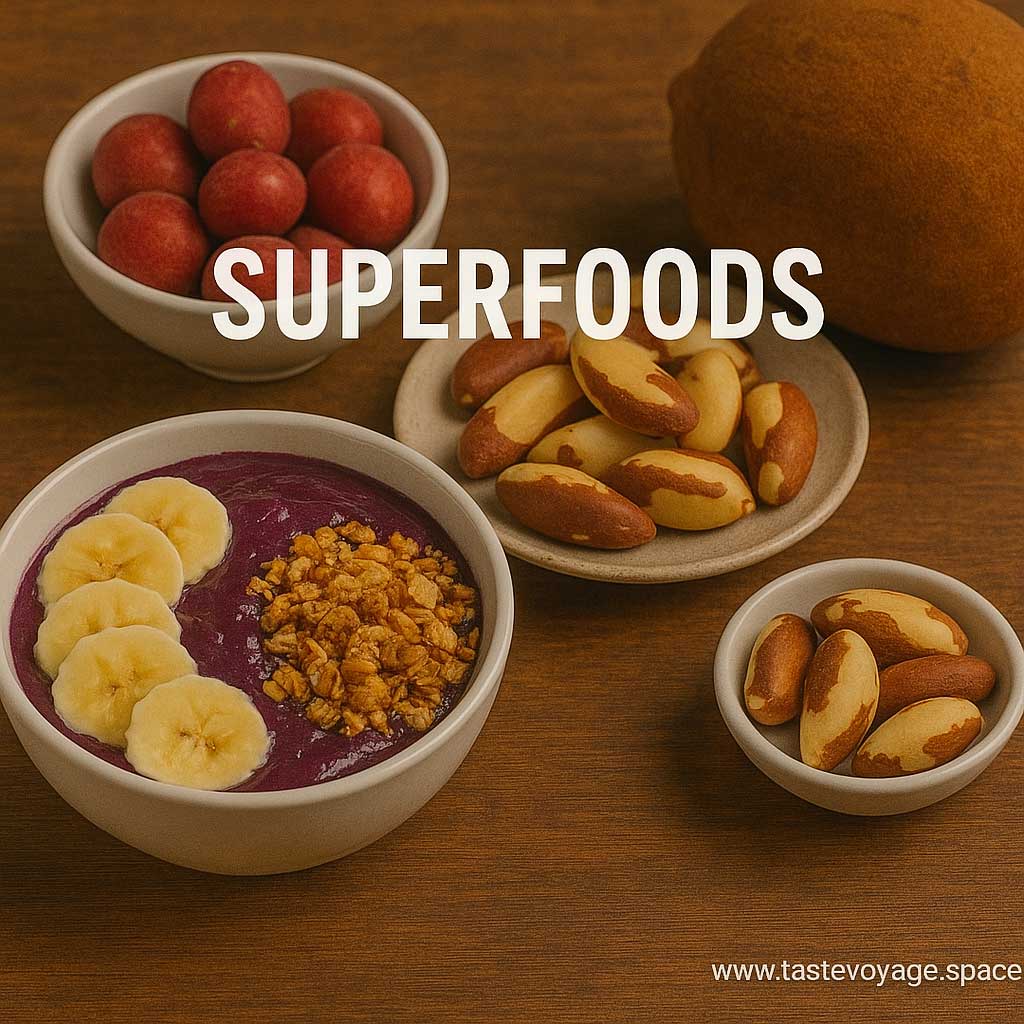Brazilian vs. American Açaí Bowls: Which Is Better?
Travel the World Through Food >> Brazilian Cuisine>>Superfoods>> Brazilian vs. American Açaí Bowls: Which Is Better?
Brazilian vs. American Açaí Bowls: Which Is Better?
Exploring the Delicious World of Açaí Bowls: Brazilian Roots and American Variations
Açaí bowls have become a beloved and vibrant part of modern food culture, enjoyed across the globe. at the heart of this colorful dish lies the açaí berry, a small purple fruit with a rich History and deep cultural significance. While many know of açaí as a trendy superfood, understanding its origins and how it has evolved into popular dishes like Brazilian açaí and American açaí bowls reveals fascinating insights into culinary traditions and cultural exchange.
The Cultural Heritage of Brazilian Açaí
Native to the Amazon rainforest, the açaí berry holds a special place in Brazilian culinary and social life. Indigenous communities have long consumed açaí as a staple food, valuing its rich nutritional content and energy-boosting properties. Traditionally, Brazilians prepare açaí as a thick, dark paste, often served cold and topped with local ingredients such as bananas, granola, and sometimes fish or manioc.
In Brazil, açaí is more than just a meal; it embodies a connection to the land and local customs. It is frequently enjoyed as a communal dish, shared among friends and family, especially in the northern regions of the country. The preparation and consumption of açaí reflect a deep respect for nature’s bounty, highlighting its importance in regional identity and daily life.
The Evolution of Açaí in the American Culinary Scene
As açaí gained international popularity, especially in North America, it transformed from a traditional Brazilian staple into a symbol of health-conscious living and trendy café culture. American açaí bowls often feature a blend of frozen açaí pulp with various toppings like fruits, nuts, honey, and seeds. These bowls are typically served in cafes and juice bars, appealing to a broad audience seeking nutritious and visually appealing options.
American versions tend to emphasize customization, allowing consumers to craft their ideal bowl according to personal taste and dietary preferences. This approach has helped açaí become a versatile ingredient, fitting seamlessly into the broader wellness movement. While they retain the core flavor and texture of the original, these bowls often incorporate local ingredients and innovative combinations, reflecting regional tastes and culinary creativity.
Comparing Cultural Significance and Culinary Approaches
While both Brazilian and American açaí bowls celebrate the versatility of the fruit, their cultural contexts offer unique perspectives. Brazilian açaí serves as a traditional dish deeply rooted in community and land, often prepared with minimal processing to preserve its authentic flavor. It symbolizes a direct link to Amazonian customs and natural resources.
In contrast, American açaí bowls showcase innovation and adaptation. They are often more visually elaborate, designed to be Instagram-worthy and appealing to a global audience. This variation emphasizes health benefits, presentation, and personalization, making it accessible to diverse lifestyles and preferences.
A Shared Love for açaí
Despite differences in presentation and context, both versions highlight the nutritional richness and cultural importance of açaí. They reflect a shared appreciation for this remarkable fruit, which continues to inspire culinary creativity worldwide. Whether enjoyed as a traditional Brazilian dish or as a modern American treat, açaí bowls serve as a delicious bridge connecting different food cultures and celebrating the natural bounty of the Amazon.
Embracing the Culinary Story of Açaí
Understanding the cultural significance of açaí enriches our appreciation of this vibrant dish. It reminds us of the deep roots and stories embedded in Traditional Recipes while inspiring innovative adaptations. Both Brazilian açaí and American açaí bowls showcase the universal joy of sharing food that is nutritious, beautiful, and connected to nature.
So next time you indulge in an açaí bowl, take a moment to savor not just the flavors but also the cultural journey behind this extraordinary fruit. Celebrate its history, diversity, and the way it brings people together across borders through the universal language of good food.
